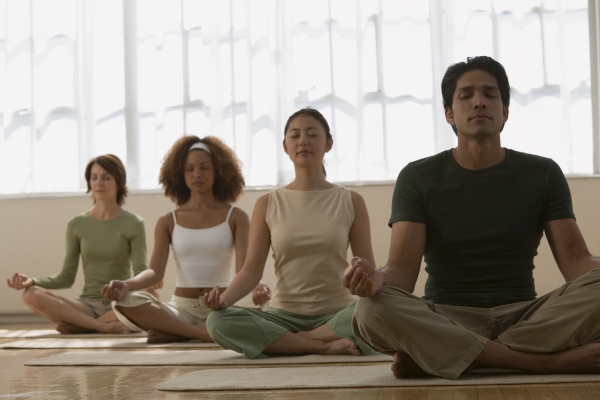Headaches plague millions of people every day all over the globe. They can quickly ruin your mood, hurt your performance on the job or at the gym and headaches can steal away quality time with those you love.
Unfortunately, many of the people out there falling victim to routine headaches turn to drugstores and pharmaceutical companies for relief.
If you’re reading this then you’re likely looking for some other, healthier alternatives to combating headaches.
In extreme cases where people are dealing with violent migraines and taking prescription drugs to deal with them, this information may offer little help but could still be beneficial. It is recommended that those individuals seek professional medical guidance.
But for those of you getting the occasional headache and feeling frustrated and annoyed, this is for you.
Painful headaches can be caused by a myriad of things, things like: strong odors, dehydration, eye strain, head trauma (bumped your head), breathing problems and caloric intake to name a few.
If you’re sensitive to bright lights and perfumes, you may experience headaches often. If you sit in front of a computer for hours at a time you may experience headaches daily.
For those of you dealing with some of those types of headaches, it’s best to remove yourself from those situations as often or regularly as possible. Easier said than done.
I know personally that my wife is very sensitive to strong odors, bright lights and loud noises, it’s just that simple so she takes measures to deal with those things. The 3 tips below absolutely help her with the headaches she suffers from regularly.
Here are 3 things you can do RIGHT NOW to naturally get rid of your troublesome headaches.

#1: Deep Breathing
It may sound boring and unnecessary to some but ‘breathing better’ is something most of us could do. Too many people breathe shallow all day long, myself included. Instead of breathing into our bellies and really forcing oxygen into our lungs, we breathe into our chest. This ‘tight’ way of breathing doesn’t do a very good job of oxygenating our blood which robs our brain of life-giving oxygen.
So what happens in the brain when it is starving for more oxygen? It hurts because brain cells are very sensitive and die without oxygen as the blood vessels begin to constrict. A simple test would be to hold your breath as long as you can until you have to gasp for air, I’m sure you’ve experienced this sensation while swimming underwater.
What happens? Your head throbs a little. If you did this repeatedly, you would bring about a self-induced headache.
Now these are symptoms are more typical of a migraine or vascular headache but they help prove a point about chronic shallow breathing and how your brain responds to disrupted and poor breathing.
Deep breathing can be done anywhere and at any time. It is preferred that you do this with your eyes closed to help make it more relaxing and to allow for improved focus on your breathing.
The key is to take long breaths, breathing in slowly up to 4 seconds and breathing out slowly also around 4 seconds. If you did this for only 2-3 minutes, you would not only feel calmer, you may also notice relief in your head. It is recommended that you do this up to 10 or 15 minutes for maximal benefit.
Surely you’ve heard of tension headaches before. Our lives are super busy and can be very stressful. We bottle up so much negative energy and sometimes we must remember to just breathe deeply into our bellies and take a moment to just unplug from the world.

#2: Move Your Body Frequently
I know what you’re thinking, “I exercise every day, moving my body is not my problem.”
First off, good for you, exercise is awesome! Never stop that. However, that’s not what I’m talking about.
You see exercise is terrific for the 60-90 minutes we do it each day. But what about those other 15-16 hours where we are awake and not exercising. We are typically sitting during those hours. We sit in the car and many jobs today require a great deal of sitting at a computer with our spine, head and neck in poor posture.
The best thing to do if your day to day involves a ton of sitting is to stand up and walk. Being upright and walking helps to naturally reset the spine and place your body in proper position. Why is it that getting up to get a drink of water down the hallway and walking back to your desk helps perk you up?
Because the simple act of moving the body stimulated the cells, improved circulation and blood flow to the brain and drinking water always helps to restore some vigor and energy.
Every 1-2 hours no matter what it is you do, stand up and move for a few minutes. This simple act done repeatedly throughout the day can instantly improve performance, poor posture as well as mood and brain function which will help combat unwanted headaches.

#3: Improve your Posture in 5-seconds ANYWHERE
Good posture is something we hear about from a young age. “Sit up straight, hold your head up, no slouching!” Sound familiar?
These tips from childhood become more meaningful as we age. The spine is under constant stress from all of the sitting previously mentioned. The more often we can put the body into proper alignment, the better we will feel and good posture begins with the head.
This again helps with circulation throughout the body and brain and puts our body into optimal postural alignment allowing everything to function better.
Simply stated, the more often you can place yourself into optimal head posture with your head up, shoulders back and chin in, the better your chances of reversing the undesirable effects of poor Forward Head Posture (FHP).
Here is how you do it:
You can do this either sitting or standing. It may actually be easier to perform this seated so that you can focus on all of the steps while also giving you something you can do at your desk, in your car, at the dinner table or anywhere you may be seated.
First, sit as tall as you can by elevating the top of your head towards the ceiling. As you do this, you may notice your shoulders moving backward and your chest sticking outward. Good, you’re on the right track.
Next, try to drop or press your shoulders downward slightly as you tuck your chin in drawing your head slightly backward. Rest your arms in your lap or on the arms of your chair. You should also feel that natural curve in your lower back improved.
Take in deep breaths thinking about each step. Hold this position for 5-seconds and then relax for a few seconds.
Continue holding the position for 5-seconds at a time up to 10 times all together. This action can be repeated as often as you desire throughout the day.
You may find yourself trying to naturally hold this stronger head position while driving or working at your desk. This improved head posture can start to become habitual and that’s a very good thing.
The bonus is that you may find a reduction in headaches due to less slouching and poor forward head posture in your life. This optimal position helps to improve breathing, circulation, energy levels and confidence.
I guess our parents and teachers knew something we didn’t about poor head posture and its negative effects!











